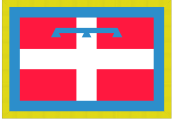Blog di Luigi Alfonso Viazzo aggiornato e completo @
http://luigialfonsoviazzo.altervista.org
Proviamo a immaginare le difficoltà (o gli ostacoli da superare) che si potrebbero frapporre a un dialogo “vincente”, a base Lincos, fra noi e gli alieni; e speriamo, comunque, che sia più semplice da affrontare di un’assemblea condominiale…
Ci mancherebbe anche una baruffa cosmica…
English Version
Let’s try to imagine the difficulties (or the obstacles to overcome) that could be put in place to a “winning” dialogue, based on Lincos, between us and the aliens; and we hope, however, that it is easier to deal with a condominium assembly …
1. the receiving civilization must be at a stage of technological evolution such as to be able to pick up radio signals and decode them;
2. aliens must be very patient to wait for the return journey of radio messages that can last for centuries and millennia; for example a greeting message sent by the radio telescope of Arecibo – Puerto Rico – in 1974, towards the stars of the globular cluster M 13, will employ only 25,000 of outward journey …;
3. ET must still have the patience necessary to interpret the Lincos language; if the same father of Lincos, (Dr. Hans Freudenthal), to explain it to the territories not accustomed to the use of mathematics, had to write a manual for the “translation” from the binary code to a decimal base, we can imagine what difficulties could meet the aliens … Think it’s a joke to communicate, but not to understand each other … (normal on Earth but in space …).
That said, Lincos shares with Esperanto the attempt to simplify the language (even if on a numerical basis) to avoid interpretations, implications and typical phrases “but I thought …”.
We would also lack a cosmic quarrel …
Il video… E.T.: The Extra-Terrestrial (2/10) Movie CLIP – Getting Drunk (1982) HD
Traduzione in latinorun per gioco (by Google Translator)
Et aspera meditati sunt (seu impedimenta), ut qui occurrat; “victor” dialogum, secundum LINCOS, inter nos et peregrinos iurisdictio erat; et spero autem quod sit facilius agere cum ecclesia condominium …
I) receptorem civilis in arte technica evolutione scaena unum sint ut possint ad colligunt usque ad decodificatione cum radio et annuit eis:
II) Peregrini non est patientia expectare reditum trinus ut epistulis quae ex radio possit per saecula et milia; eg radio telescope in salutem per nuntium misit in Arecibo – United States – in MCMLXXIV Daphnin ad astra feremus ad racemum globosa M XIII, uti iter … 25,000 nec nisi quam exteriora;
III) Peregrinus erit usque ad patiendum sufficiamus ad solutionem LINCOS sermone opus est; si ipse Pater LINCOS (Dr. Joannes Freudenthal) indomitus ad terrestres veniamus ad usum explicare in mathematica, in manuale pro habui scribere “translationem” binarii codice, a basi ad unum decimalem, possumus imaginari quae vires difficultatibus exterorum iniuria dignum putas … communicare non audiat unusquisque … (Telluri Duis sed tempus …).
Post haec LINCOS habet cum Esperanto simpliciorem reddere conatus ad lingua (secundum numerum ex tametsi) ad vitare interpretationes ut “sed putavit …”.
Non desunt etiam privatam cosmicam in proelium …


Spunto in Piemontese by Wikipedia
Photo by Luigi Viazzo with Samsung Galaxy S3



